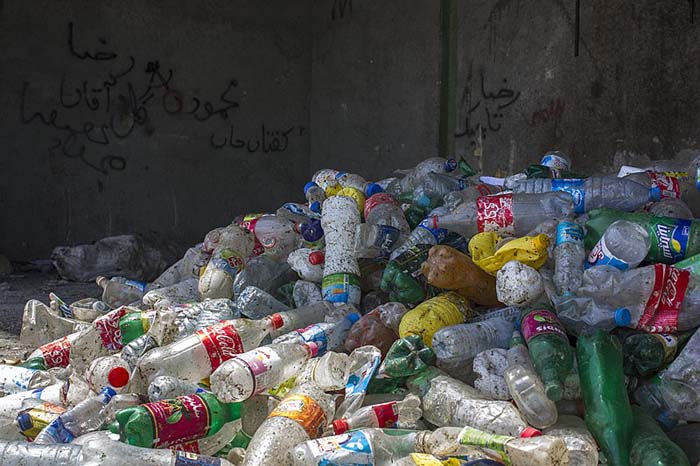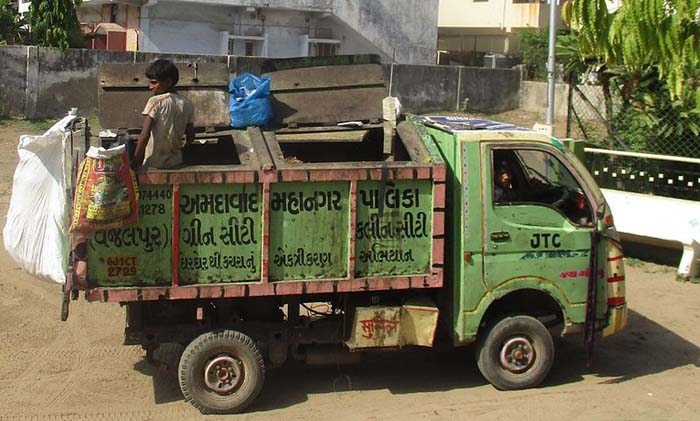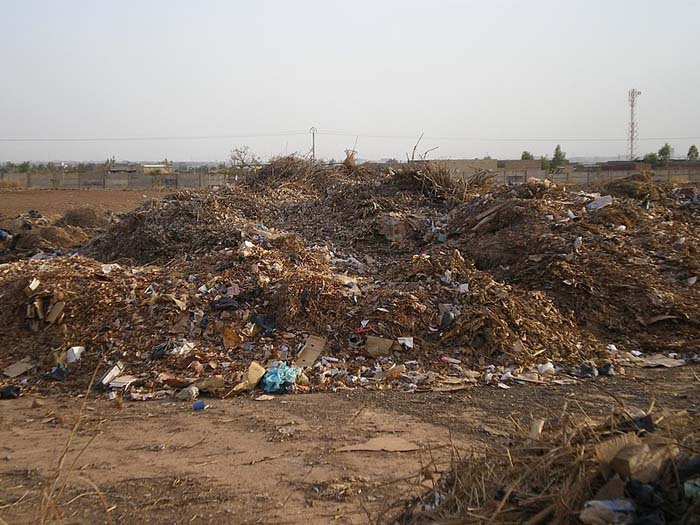
The lack of effective waste management systems greatly impacts sustainability, public health, and environmental health. These waste management systems include all the steps necessary for waste management, from beginning to disposal. This encompasses not only regulation and oversight but also gathering, transportation, treatment, and final waste disposal. Reducing waste’s negative impact on ecosystems and human health is the ultimate goal of efficient waste management.
Key Components of Waste Management Systems
Production of Waste:
At this point, garbage starts to pile up. It encompasses a wide range of materials, from food scraps and medical waste to industrial by-products and general household waste.
Collection of Waste:
This involves collecting waste from a variety of locations, including homes, businesses, and factories. Timely removal of waste through efficient collection systems reduces the likelihood of environmental contamination and health hazards.
Transporting Waste
Transportation to treatment or disposal facilities is an essential step following collecting. Logistics planning is necessary at this point to guarantee the safe and effective transportation of waste.
Treating waste
This entails processing waste to minimize its toxicity or volume. Some methods include biological treatment, composting, recycling, and incineration. The goal is to reduce the amount of waste that needs final disposal while recovering usable materials.
Disposing Waste:
Disposal of waste in incinerators, landfills, or other approved sites is the last stage. Preventing air, water, and soil pollution requires proper disposal.
Monitoring and Regulating Waste:
Continuously checking waste management procedures and complying with regulations is crucial to guaranteeing that they protect public health and are up to environmental standards. Among these tasks include implementing waste management policies, enforcing regulations, and tracking waste streams.
Here is the Process of the Waste Management System
From start to disposal, waste is managed through a series of steps that make up the process of waste management. Reduced negative effects on human health, ecosystems, and the long-term viability of our resource base are the results of effective waste management. The main stages of typical waste management systems are as follows:

- Generation of Waste
- Electronic waste, industrial waste, municipal solid waste, biomedical waste, hazardous waste, and so forth.
- When individuals, industries, companies, and other entities begin to generate waste, this marks the beginning of the waste management process.
- Collecting Waste
- There are different types of collection methods, including automated, manual, and specialized collection for recyclable or hazardous materials.
- Waste is gathered from various places. Methods such as drop-off centers, community bins, curbside collection, etc., can facilitate this.
- Transportation of Waste
- Reducing fuel usage, efficient routing, and making sure of safe transportation of dangerous materials.
- Transferring the collected waste to facilities for treatment, recycling, or disposal is the first step.
- Separating and Sorting Waste
- There are three main types of sorting: mechanical (using things like air classifiers, magnets, and conveyor belts), optical, and manual.
- Waste is divided into various types, including non-recyclable waste, organic waste, recyclables, and hazardous waste, to facilitate separation and sorting.
- Waste Treatment and Processing
Mitigating harmful effects, decreasing volume, and recovering usable materials are all goals of waste processing.
- Anaerobic Digestion
This is the biological treatment of organic waste, with the result being biogas.
- Incineration
It is incinerating waste to decrease its volume and possibly even generate heat.
- Composting
It is organic waste biodegradation for compost production.
- Recycling
It creates new products from old ones to reduce the disposal of potentially valuable materials.
- Disposal of Waste:
Last but not least, there’s proper disposal of waste that cannot be recycled, repurposed, or treated.
Methods:
- Incineration with Energy Recovery
Waste incineration to produce heat or electricity while reducing its volume.
- Landfilling:
Waste is put in special landfills. To ensure the safety of the environment, modern landfills have systems to treat leachate and liners.
- Preventing and Reducing Waste:
These are measures taken at the source to reduce waste output.
Practices:
- Public Education and Policies:
Promoting actions and regulations that result in less waste.
- Reuse:
This is making several uses of an item before throwing it away.
- Reduce Source:
Modifying a product’s design, production, or usage to decrease its toxicity or quantity.
- Monitoring and Regulation:
Verifying that all waste management practices adhere to all applicable environmental standards and regulations.
Conducting routine inspections, enforcing regulations, and monitoring the effects on the environment.
Government agencies, businesses, individuals, management companies, and communities are all involved in each of these steps. These stakeholders must work together effectively to manage waste in a way that is socially acceptable, economically feasible, and ecologically sound.
Materials are needed for waste management
Collection, transportation, treatment, and disposal are just a few of the waste management processes that can necessitate different types of materials. Examples of such waste include medical waste, hazardous waste, and municipal solid waste. Some typical tools and supplies needed for efficient waste management are as follows:
- Disposal
Infrastructure
- Gas collection systems:
As a means of recovering energy from landfill gases, particularly methane.
- Leachate collection systems
For the purpose of controlling and treating liquid landfill runoff.
- Landfills
They specifically designed a site for the disposal of waste that cannot be composted or recycled.
- Management Tools and Education
Materials
- Management software
This is necessary for ensuring regulatory compliance, monitoring waste volumes, monitoring waste truck routes, and making sure everyone is following the rules.
- Educational materials
Resources to inform the general public about the importance of recycling and proper waste sorting, including online resources, posters, and brochures.
- Transportation
Equipment
- Conveyors:
So that waste cans and recycling centers can transport recyclables and waste.
- Baling machines:
Bales of compressed recyclables, including plastics and cardboard, are more convenient to transport and handle.
- Compactors:
The goal is to minimize waste so that transportation can run more smoothly.
- Protecting the Environment and Safety
Equipment and Supplies
- Monitoring equipment
To help identify and quantify contamination levels (e.g., groundwater testing kits and air quality monitors).
- Spill kits
Help to contain and clean up spills of hazardous waste.
- Personal protective equipment
Equipment such as safety goggles, masks, gloves, and protective gear should be available to employees who deal with waste.
- Collection
Vehicles
- Specialized vehicles
Medical and hazardous waste typically has containment features installed to prevent spills.
- Recycling trucks
Ready to sort recyclables and transport them in a separate container.
- Garbage trucks
For the purpose of collecting waste and delivering it to recycling facilities or landfills.
Bins and Containers
- . Specialized containers
In order to guarantee the safety and avoid contamination of hazardous or medical waste.
- Compost bins
For biodegradable materials, including yard waste and food scraps.
- Recycling bins
Sort your recyclables by color: metal, plastic, paper, and glass.
- Trash bags and cans
It is intended to collect garbage from homes and businesses
- Treatment and Processing
Facilities and Machines
- Anaerobic digesters:
They process organic waste into digestate and biogas
- Shredders:
To reduce the size of something for processing purposes by breaking it down into smaller pieces.
- Composting facilities:
Turning organic waste into compost requires processing.
- Incinerators:
It is for use in thermal waste treatment, particularly with respect to medical and hazardous waste.
- Sorting machines:
Separation of recyclables (such as metals, plastics, and paper) by means of automated systems.
Managing waste effectively necessitates a holistic strategy that incorporates the appropriate equipment and materials at each step, from collecting to disposal, to protect public health and the environment.
 Importance of Waste Management Systems
Importance of Waste Management Systems
The health of the environment, the public, the economy, and available resources are all affected by inefficient waste management systems, making them all the more important. The most critical aspects of waste management systems are summarized here:
- Social Impact
- Educational Opportunities
Sustainable practices and the significance of reducing, reusing, and recycling can be educated to the public through waste management programs.
- Community Health
Communities that have well-managed and clean waste disposal systems have an improved quality of life. This is because they are more aesthetically pleasing and easier to live in.
- Public Health
- Safe Communities
Toxic materials and sharp objects are less likely to be present in communities with well-maintained waste management systems.
- Preventing Diseases
Insects and rodents are examples of disease vectors that can spread disease due to improper waste management. Proper waste disposal practices can prevent disease outbreaks such as respiratory infections, dengue fever, and cholera.
- Compliance with Regulations
- International Obligations:
In order to fulfill their obligations under international agreements on pollution reduction and waste management, many nations have signed on, which calls for strong waste management practices.
- Legal Adherence
Effective waste management aims to ensure compliance with standards and regulations on a local, national, and international level. This promotes a positive image for the company or community while also helping to avoid legal penalties.
- Economic Advantages
- Cost Savings
Efficient waste management can significantly reduce pollution mitigation and cleanup costs. It keeps landfills operational for longer, which means less money spent on building new dump sites.
- Job Creation
The waste management sector includes collection, sorting, recycling, and waste-to-energy operations, which generate employment opportunities.
- Recovery of Resources
Economic advantages may accumulate from recycling and composting programs. These programs recover valuable materials and decrease the demand for raw materials. You can make money by processing and selling recyclable materials such as plastics, paper, and metals.
- Climate Change Mitigation
- Greenhouse Gas Reduction
Methane is a powerful greenhouse gas produced during the anaerobic decomposition of organic waste in landfills. Effective waste management practices can mitigate its emissions. Implementing waste management strategies like waste-to-energy conversion, recycling, and composting can reduce the negative effects of climate change.
- Protecting the Environmental
- Preserving Ecosystems
Effective waste management aims to prevent ecosystem pollution and habitat destruction. Proper waste treatment and disposal help protect wildlife and preserve biodiversity.
- Reducing Pollution
Reduced soil, water, and air pollution is a direct result of well-managed waste. The emission of greenhouse gases and harmful chemicals can be drastically decreased through proper waste processing and disposal.
- Resource Efficiency and Sustainability
- Saving Energy
A renewable energy source that helps reduce reliance on fossil fuels, waste-to-energy technologies transform non-recyclable waste into fuel, electricity, or heat.
- Reusing Materials
Reduced demand for new resources is a direct result of recycling programs that allow materials to be reused. This aids in the conservation of minerals, water, and timber, among other natural resources.
Conclusion
Waste management systems are crucial for building more sustainable, cleaner, and healthier communities. Well-managed waste can improve public health, environmental protection, and economic growth.
